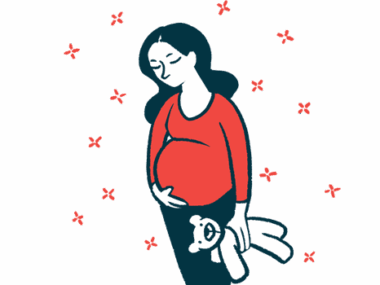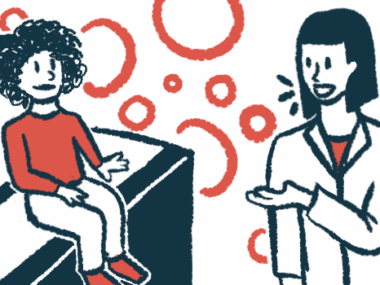Our journey to having a healthy child with IVF
This family was able to have IVF with pre-implantation genetic testing
Written by |

Alongside our daughter Eva’s diagnosis of progressive familial intrahepatic cholestasis (PFIC), we learned that our future children would have a 25% chance of having the disease. We’d always hoped for another child, a sibling and playmate for our daughter. But the idea of risking another child going through the distress that PFIC caused Eva was unthinkable.
One day, when walking through a leafy country park here in England with a group of mothers and babies, I met a mum who had a child the same age as Eva. Over the following weeks, we chatted about sleep deprivation, breastfeeding, Eva’s ill health, and plans for future children. My new friend explained that her family had a degenerative genetic disease. They were relieved to be able to use in vitro fertilization (IVF) with pre-implantation genetic testing (PGT) to ensure their children wouldn’t have the disease.
I’d never heard of IVF with PGT before. The knowledge that it might one day be an option carried us through a time of uncertainty, until we eventually met with a genetic counselor.
Qualifying for IVF
The genetic counselor explained the mandatory criteria we had to meet to qualify for IVF with PGT. The genetic condition had to be serious and our future children had to have more than a 10% chance of having it. We wouldn’t qualify if we already had an unaffected child. We both had to be nonsmokers. I had to be under the age of 40 and have a healthy body mass index.
Luckily, we ticked all of the boxes and qualified for free IVF with PGT through the U.K.’s National Health Service.
In the months and years between Eva’s diagnosis and starting the process of IVF with PGT, I got to know some other families in the PFIC community. While our experiences with the disease united us, the circumstances in different countries with different healthcare systems were drastically different.
This process is expensive, and we felt incredibly lucky to have the treatment without the added financial pressure of paying for it. Families in the U.S. shared stories of being unable to afford the procedure. They often had to accept the risk of having another child with the disease or getting a prenatal diagnosis with the option of abortion. Both were incredibly stressful, particularly for families that have already faced the mental, physical, and emotional challenges of caring for an ill child.
License to test!
While we managed to jump through all the hoops to qualify, we stumbled at the final hurdle. Genetic testing of embryos for PFIC type 3 wasn’t licensed by the Human Fertilisation and Embryology Authority (HFEA), an independent regulator of fertility treatment and research using human embryos in the U.K. We hoped the license would be approved, as it was already approved for PFIC type 1, but we knew it wasn’t guaranteed. Applying for the license would also considerably slow down our journey of having a second child.
Nine months after first meeting with the genetic counselor, we found out that a family with PFIC type 4 was also applying for a license from the HFEA. Working with the PFIC Advocacy & Research Network and Genetic Alliance UK, I advocated for our PFIC type 3 application to piggyback on the other family’s application, which would avoid repetition and speed up the process.
Our family wrote to the HFEA about our experience of caring for a child with PFIC, as well as the impact it had on both Eva’s life and our own. Thankfully, the license was granted, and we could have another child who would be biologically our own. We were so happy and relieved. The license was expanded to include all PFIC subtypes, which meant one less hoop that other PFIC families would have to jump through.
Creating our test
We met the funding criteria and had the license, but we still couldn’t start IVF. We needed to develop a bespoke genetic test to determine if our embryos carried our PFIC type 3 genetic mutations.
Five months later (just as the medical secretary was probably starting to dread emails with my name on them), the creation of a bespoke genetic test for our embryos was completed. We could finally start the IVF process, which was a different journey entirely.
Note: Liver Disease News is strictly a news and information website about the disease. It does not provide medical advice, diagnosis, or treatment. This content is not intended to be a substitute for professional medical advice, diagnosis, or treatment. Always seek the advice of your physician or other qualified health provider with any questions you may have regarding a medical condition. Never disregard professional medical advice or delay in seeking it because of something you have read on this website. The opinions expressed in this column are not those of Liver Disease News or its parent company, Bionews, and are intended to spark discussion about issues pertaining to liver disease.








ANNIE
A really informative, interesting article. The way Sophie explains the pitfalls and trials of obtaining the ivf treatment clarifies what advances are being made in this field of genetic medicine. Well done Sophie .